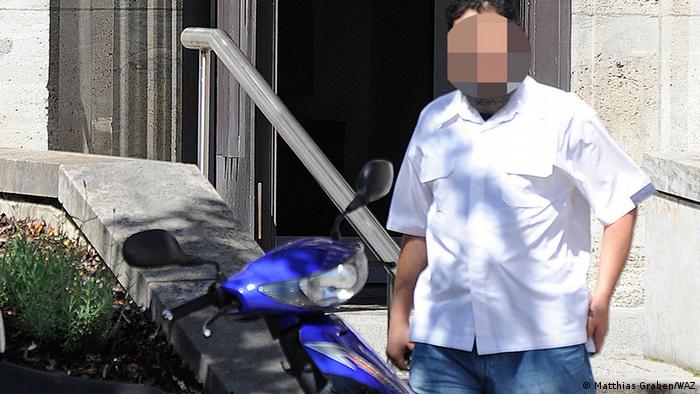The caravan, the caravan…
There is a crisis going on at the California border check point where an estimated 200 migrants are attempting to gain entry into the United States by using all tactics stressing our resources and laws.
(Note the sign provided by ANSWER Coalition)
So, the big question is if these people are desperate to leave their home countries out of fear, crime and corruption, then why have they not visited our embassies in their home countries? They just fled. People fleeing to the United States must and do travel through Mexico. So, where is the humanitarian policy of Mexico to accept these desperate people?
A large number of people attempting to enter the United States come from a handful of countries in Central America such as Guatemala, El Salvador, Honduras and Nicaragua. So, let us examine Honduras as an example. for a summary of the crime and threat assessment in Honduras, go here.
In 2009, Obama cut $200 million in non-humanitarian aid to Honduras. The United States must address stabilizing these countries, rather than allowing their failures and exporting the problem(s) to the United States.
But:
Honduras, one of Latin America’s poorest nations, strives to improve its economic and democratic development with U.S. assistance. The United States has historically been the largest bilateral donor to Honduras. U.S. Agency for International Development (USAID) programs target a variety of sectors including education, health, economic policy, microenterprise, environmental conservation, food security, municipal development, and justice sector reform. USAID has provided more than $3 billion in economic and social development assistance to the Honduran people since it began working in the country in 1961. Currently, programs focus on addressing the main push factors of migration by improving citizen security, reducing extreme poverty, and improving public administration through transparency and accountability reforms. To achieve these objectives, USAID’s efforts address citizen security through community-based crime prevention activities, with a focus on the highest crime neighborhoods and those youth who are most at-risk. Additionally, USAID strengthens local and national governance, as well as civil society monitoring and watchdog organizations; helps the poorest sectors of society increase food security and incomes; supports the sustainable management of natural resources; expands quality basic education and workplace and life-skills training; and improves the quality and participation of local citizens and civil society in decentralized basic services.
In 2017, the U.S. Department of Commerce will be dedicating $1.5 million for a customs and border management program focused on improving trade into Honduras and others parts of Central America. The U.S. Department of Agriculture provided $47 million in 2015-2016 for its two programs that deliver school meals to 53,000 students and increase agricultural productivity and trade.
The United States Armed Forces maintain a small presence at a Honduran military base. U.S. forces conduct and provide logistical support for a variety of bilateral and multilateral exercises–medical, engineering, counternarcotics, and disaster relief–for the benefit of the Honduran people and their Central American neighbors. Through the Central America Regional Security Initiative, the United States supports the Government of Honduras by assisting law enforcement entities in disrupting criminal networks; building investigative, prosecutorial, and judicial capacity; and implementing violence prevention programs for vulnerable communities.
In June 2005, Honduras became the first country in the hemisphere to sign a Millennium Challenge Corporation (MCC) Compact with the U.S. Government. Under the Compact, the U.S. Millennium Challenge Corporation invested $205 million over 5 years to help Honduras improve its road infrastructure, diversify its agriculture, and transport its products to market. In 2013, Honduras received a $15.6 million MCC Threshold Agreement to support Honduran efforts to improve public financial management and create more effective and transparent public-private partnerships.
The State Department website for the embassy in Honduras explains that in order to obtain a visa, the applicant must establish they meet all requirements to receive a visa. The website even includes a ‘visa wizard’ that aids in the application process to determine the specific visa that best fits the case.
There is a fraud unit at all embassies and if fraud is committed during in the visa process, benefits are lost, fines are applied and a jail sentence can be applied.
There is yet another requirement for travel and approval to enter the United States, vaccines.
They include: mumps, measles, rubella, polio, tetanus and diphtheria, pertussis, Haemophilus influenzae/type B, hepatitis A and B, rotavirus, meningococcal disease, varicella, pneumococcal disease, and seasonal influenza.
So, given just the vaccine requirements, detention in either Mexico or the United States for those attempting to enter the United States is warranted. The cost however of medical examinations and detention is significant and government agencies cannot estimate those costs to the taxpayer.
Now, here is something quite curious:
Who is a refugee?
According to the 1951 United Nations Refugee Convention, a refugee is defined as someone who “owing to a well-founded fear of being persecuted for reasons of race, religion, nationality, membership of a particular social group, or political opinion, is outside the country of his nationality, and is unable to or, owing to such fear, is unwilling to avail himself of the protection of that country…”
- Asylum seekers have submitted a claim for refugee status and are waiting for this claim to be accepted or rejected.
- Refugees and asylees comprise the majority of displaced persons resettled to the United States.
What are the top countries of origin and asylum*?
The top ten countries of refugee origin are Afghanistan, Iraq, Somali, DR Congo, Myanmar, Colombia, Sudan, Vietnam, Eritrea, and China.
The top ten countries of refugee asylum are Pakistan, Iran, Syria, Germany, Jordan, Kenya, Chad, China, United States, and United Kingdom.
* Countries are listed in order from greatest to least number of refugees as of Dec 2010.
Source: UNHCR Global Trends (2010)
Statistics on International Refugees and US Domestic Refugee Admissions:
Source: UNHCR, 2009 Global Trends: Refugee, Asylum-Seekers, Returnees, Internally Displaced and Stateless People
- As of 2009, an estimated 15.2 million refugees were located around the world. Of these refugees, 251,500 were voluntarily repatriated to their home nations.
- In 2011, the United States accepted 56,424 refugees for resettlement.
Source: U.S. Department of State, Bureau of Population, Refugees, and Migration (PRM), Worldwide Refugee Admissions Processing System (WRAPS)
The U.S. has projected a refugee resettlement ceiling of 76,000 individuals for FY 2012.
Source: Presidential Determination No. 2011-17: FY 2012 Refugee Admissions NumbersImmigrant, Refugee and Migrant Health Branch (IRMH)
The goal of the IRMH Branch within the Division of Global Migration and Quarantine is to promote and improve the health of immigrants, refugees, and migrants and prevent the importation of infectious diseases and other conditions of public health significance into the U.S. by these groups. To accomplish this goal the IRMH branch plays a significant role in refugee health, both overseas and domestically.
Overseas
- IRMH develops and implements the Technical Instructions used by overseas panel physicians who are responsible for conducting the medical examinations for U.S.-bound refugees. The Technical Instructions consist of medical screening guidelines, which outline in detail the scope of the medical examination. The purpose of the medical examination is to identify, for the Department of State and the US Citizenship and Immigration service, applicants with medical conditions of public health concern.
- IRMH also maintains an anonymous collection of surplus blood samples from overseas screenings called the Migrant Serum Bank (MSB). Scientists from around the world can request to use the samples for research projects.
Domestic
- The Domestic Refugee Health Program facilitates collaboration with state and local health department partners to improve the health care and monitor medical conditions of refugees after their arrival into the United States.
- IRMH also maintains the Electronic Disease Notification System (EDN), which notifies states and local health departments of the arrival of refugees to their jurisdictions. EDN provides states with overseas medical screening results and treatment follow-up information for each refugee.
IRMH Partners
To accomplish its goals in refugee health, IRMH works with many external partners:
- U.S. Department of State
- International Organization for Migration
- United Nations High Commissioner for Refugees
- U.S. Office of Refugee Resettlement
- U.S. Bureau of Population, Refugees, and Migration
- World Health Organization
- State and Local Health Departments
- Voluntary Agencies









